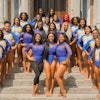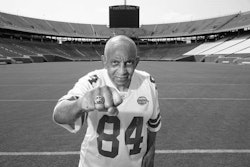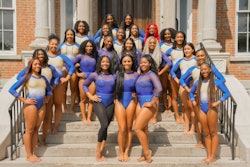Colleges and those in higher ed live with a dirty open secret that most people just usually dismiss with a shrug when it occasionally gets exposed.
The secret?
College sports exploit mostly young Black athletes and enrich mostly White administrators and coaches.
On Monday, the indisputable truth will be in full view when Alabama plays Clemson to determine college football’s national champion.
There’s an obscene amount of money involved.
Both schools will get $6 million just for being in the College Football Playoff.
Of the $7.3 billion paid for the 12-year broadcast rights to the playoffs, ESPN will pay the CFP, separate from the NCAA, $470 million this year.
Just to put things in perspectives, the No. 1 school in terms of research and development funding is Johns Hopkins, according to the National Science Foundation’s most recent list of the nation’s top colleges.
For being on the top of R&D, Johns Hopkins was at a measly $2.1 million.
Maybe they’d get more if they could invent a way to prevent torn ACL knee injuries.
The point is the money in college sports dwarfs all. Including our sense of priorities in higher ed.
So it’s a good thing that, on the week of the big game, Donald Yee, a lawyer and partner of his big-time sports agency (which represents names like New England Patriots quarterback Tom Brady and New Orleans head coach Sean Payton), has written a piece for the Washington Post that dares to tell it like it is.
Quickly, Yee dispenses with the student-athlete/love of the game myth to get to the point.
Even though one or two players may go on to big contracts like Alabama’s Heisman-winning running back Derrick Henry, most of the players Monday night will “be playing for free.”
“Most fans of college football and basketball go along with the pretense, looking past the fact that the NCAA makes nearly $1 billion a year from unpaid labor,” Yee writes.
But it’s more than about the money.
“… (A)fter a year when Black Lives Matter protests spread across the country, and at the end of a season when the football team at the University of Missouri helped force the resignation of the school’s top two administrators over how the campus handled race-related incidents, we need to stop ignoring the racial implication of the NCAA’s hypocrisy,” writes Yee.
Yee cites a 2013 report of the University of Pennsylvania’s Center for the Study of Race and Equity in Education that found 57 percent of the football players and 64 percent of the men’s basketball players in the six biggest conferences were Black.
At those same schools, Black men made up less than 3 percent of the overall student population.
“So by refusing to pay athletes, the NCAA isn’t just perpetuating a financial injustice,” writes Yee. “It’s also committing a racial one.”
The players are mostly Black and exploited. And the enriched? Mostly administrators and coaches. Pac-12 Conference head Larry Scott is at $3.5 million. The NCAA head, Mark Emmert, earns more than $1 million. Nine athletic directors are at more than $1 million each, and nearly 50 make more than $500,000, according to USA Today.
And, Yee points out, most of them are White.
“Since 1951, when its first top executive was appointed, the head of the NCAA always has been a white man,” writes Yee. “Of the Power Five conferences, none—dating back to the 1920s—has ever had a nonwhite commissioner. A 2015 study by the University of Central Florida’s Institute for Diversity and Ethics in Sport found that 86.7 percent of all athletic directors in the NCAA were White.”
As a sports agent, Yee could possibly stand to gain if the business model were changed and students were actually paid.
But there are simpler changes that could be implemented without much of a revolution. Things like guaranteed four-year scholarships. Only some schools have gone to that—and only after being pressured.
And why not allow more students to benefit from the athletic coffers?
Don’t you find it appalling when the top research institute in the nation has an R&D budget that’s dwarfed by football?
Something needs to happen. And maybe we should all learn a lesson that the football players at Mizzou taught us this year.
Student athletes have more power than they think. Using football as leverage works. It could bring a fairness to college sports that we’ve never known. It could end the inherent racism in the game that we too conveniently ignore.
Emil Guillermo is an award-winning journalist and commentator based in California. He writes at http://www.aaldef.org/blog




















